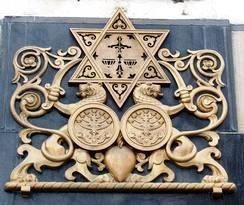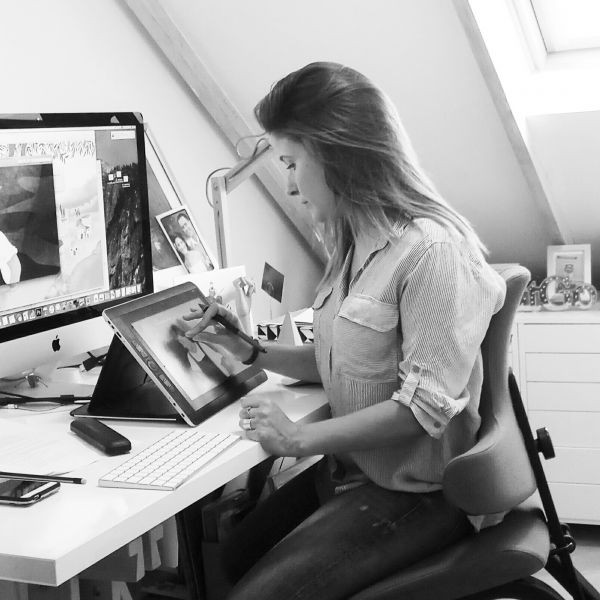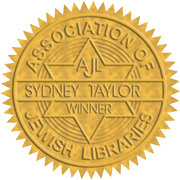Gloria's Blog
Arthur Syzk: The London Years
In 1847 London got its first double decker omnibus and Londoners got to see London above eye level. Well not quite. You get what you pay for, and those first double-deck passengers may have had a seat with a view but they were most likely too busy shivering in London drizzle to be able to enjoy the view. Those early omnibuses were roofless and tickets to the top deck went for a third of the price of those below.
It wasn't until the 1920s that the top deck finally got a roof and Londoners could get an above eye level's view of the city without getting rained on - even if they did have to shell out a few more pennies for a ticket. Whoever had the bright idea to shelter London's' bus passengers from the inclement weather introduced me to the work of the Polish artist Arthur Szyk. For it was on a rainy day, from the top deck of a number 25 London bus that I first noticed the metal relief with the Star of David, above the doorway of Albert's Menswear at 88 Whitechapel High Road. I had walked past no. 88 countless times, yet until that trip on the top
Number 88 Whitechapel High Road has been home to Albert's menswear since the 1940s. The premises were previously occupied by the offices of the Jewish Press, which had commissioned the relief from the Polish artist Arthur Szyk. Arthur Szyk (pronounced '
The main attraction of this exhibition was
Syzk called the Statute 'The Golden Book of Polish Judaism' and in 1926 when Marshal Jozef Pilsudski took over Polish rule after his coup d'état, Syzk turned his prodigious artistic talents to illuminating the Statute of Kalisz. Szyk admired Pilsudski's fair treatment of Poland's minorities and dedicated his illuminated manuscript to Pilsudski, who was considered to be a pal of the Jews. The Statute may have been a medieval document, but Szyk believed it had an important message for the world - one of freedom and tolerance. Szyk illuminated his Statue in the medieval style but the themes were modern. He showed Polish Jews throughout the ages participating in Polish life. Whether it was the minting of the first Polish coins by Jewish craftsmen or Jewish soldiers participating in the struggle to liberate Poland in the First World War, Szyk's message was that Polish Jews had not only brought economic benefits but had also fought for their country's freedom.
The Statue was exhibited in Paris and Geneva to critical acclaim. In 1932, the Polish government sent Szyk on a yearlong a tour of Poland with the Statue of Kalisz as the star attraction. The tour was a box office smash hit, selling thousands of tickets,
The Polish government was keen to show that unlike the Germans they were tolerant and enlightened. And Szyk's work was the ideal vehicle.
In Britain too, Szyk's exhibition and the
The Szyks returned to London in 1935. It was during this visit that he was commissioned to produce the gold painted cast iron metal relief that still sits above the doorway of 88 Whitechapel Road, as well as two smaller panels with the same design inside the building. The relief shows two lions of Judah grasping swords with a Star of David in the
In 1935, number 88 housed the offices of a new Jewish newspaper, the Jewish Daily Post, England's only English language Jewish daily paper. The newspaper was set up to rival the more established Yiddish language Di Tsayt (The Jewish Times) located further east at 325 Whitechapel Road. The Post was to provide daily news to the younger generation of Jews who preferred their news in English. And it was the Jewish Daily Post that published two of Szyk's earliest
By 1936 the Post had closed and Szyk was hard at work on his famous illuminated Haggadah that would become his best-known project. Today the metal relief remains above Albert's Menswear in this busy part of London, a
photo by kind permission of Harry Jackson.
Further Reading
Arthur Szyk: Artist, Jew, Pole by Joseph P. Ansell, The Littman Library of Jewish Civilization:2004
When you subscribe to the blog, we will send you an e-mail when there are new updates on the site so you wouldn't miss them.







